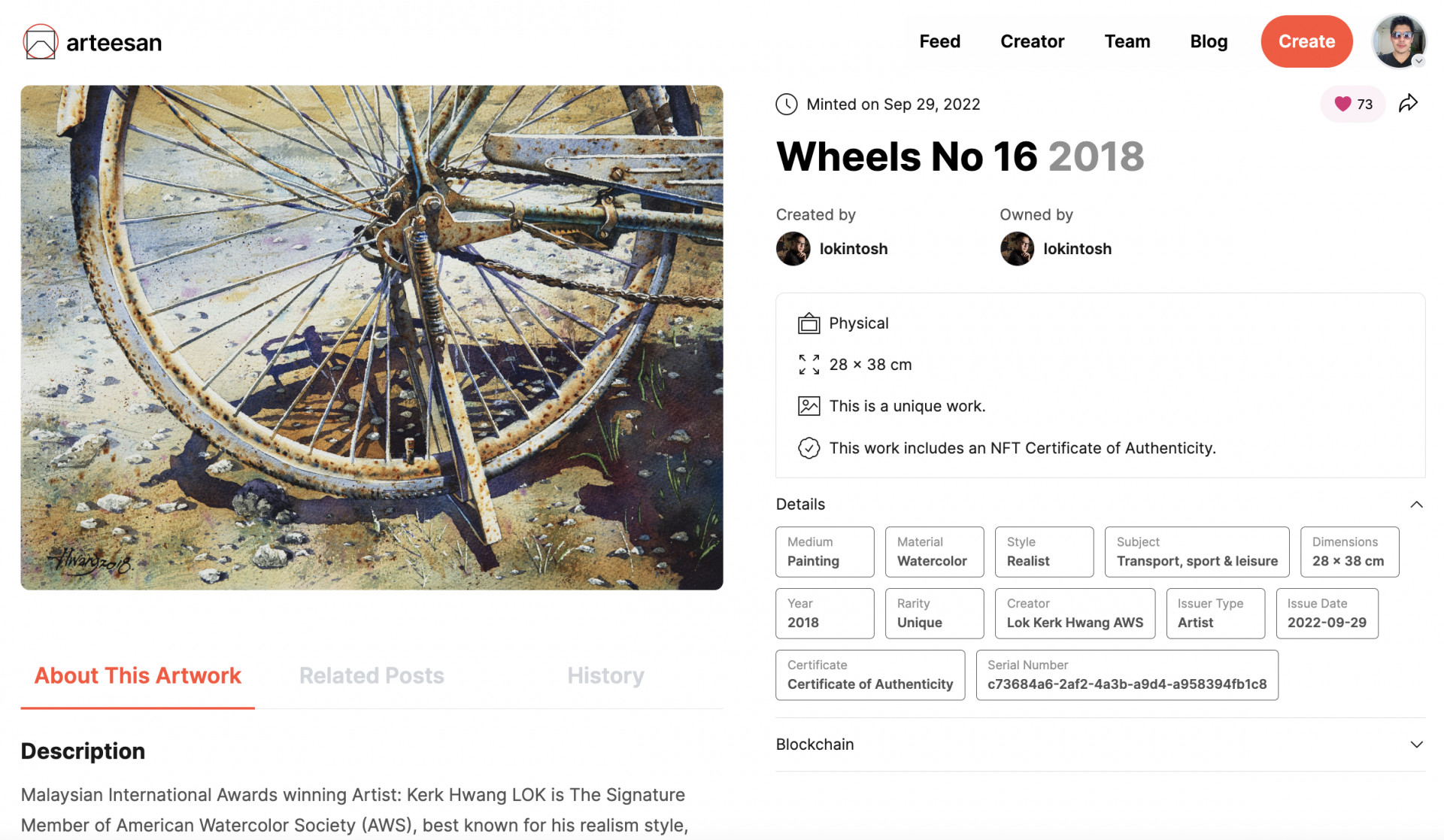NFTs (Non-Fungible Tokens) have made a significant impact on the art world by providing a new way for artists to monetize their work and prove its authenticity. While NFTs are primarily associated with digital art, they can also be used as certificates of authenticity for physical artwork. In this blog post, we will explore the growing use of NFTs as a way to verify the ownership and authenticity of physical artwork.
Traditionally, the authenticity of physical artwork has been verified through paper certificates or letters of authenticity. These documents provide some level of protection against fraud, but they are easily forged and provide limited protection. With the growth of the art market and the increasing number of art forgeries, it has become increasingly difficult to verify the authenticity of physical artwork. This is where NFTs come in.

NFTs are unique digital tokens stored on a blockchain, making them resistant to tampering and forgery. When an artist creates a physical artwork and mints it as an NFT, they are creating a digital certificate of authenticity that verifies the ownership and provenance of the artwork. This gives buyers the confidence they need to invest in physical artwork, knowing that they are buying a unique piece that has been verified as authentic.
One of the key benefits of NFTs as certificates of authenticity is their ability to increase the value of physical artwork over time. As the popularity of a piece of artwork grows, so does its value. With an NFT as its certificate of authenticity, the ownership and provenance of the artwork are verified, making it easier for buyers to invest in the piece with confidence. This, in turn, drives up the value of the artwork as more people become interested in owning a unique piece of physical art with a verified history.
Another advantage of using NFTs as certificates of authenticity is their potential to streamline the art market. By providing a secure and easily verifiable record of ownership and provenance, NFTs make it easier for buyers and sellers to transact with confidence. This can help reduce the risk of fraud and increase the efficiency of the art market, making it easier for artists to monetize their work and for buyers to invest in it.
To top that off, NFT can also be the digital representation of physical artworks, to showcase the artwork to a wider audience. By creating a digital representation of the artwork, artists, and collectors can share their artwork with people around the world with a special ownership verified checkmark on supported platforms like Instagram & Facebook, increasing exposure and potentially attracting new buyers. This can help to increase the value of the artwork, as it becomes more well-known and sought-after.
In conclusion, NFTs are proving to be a valuable tool for verifying the authenticity and ownership of physical artwork. By providing a secure, permanent, and easily verifiable certificate of authenticity, NFTs are making it easier for artists to monetize their physical art and for buyers to invest in it with confidence. As the use of NFTs continues to grow, we can expect to see the art market become more efficient, reducing the risk of fraud and increasing the value of physical artwork.
Creating (also known as minting) an NFT especially one that serves as a certificate of authenticity can be daunting. You will have to learn about blockchain wallets, buying cryptocurrency and funding your wallet, and signing blockchain transactions. Arteesan provides a free and easy-to-use tool for artists to create the NFT-COA, all you need to do is to have a creator account with Arteesan.
Create an account now.
Share this article


